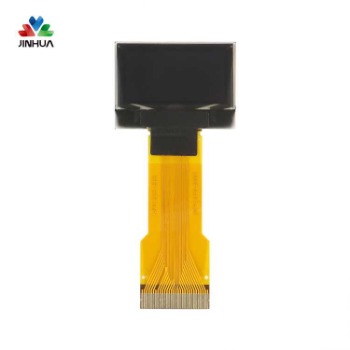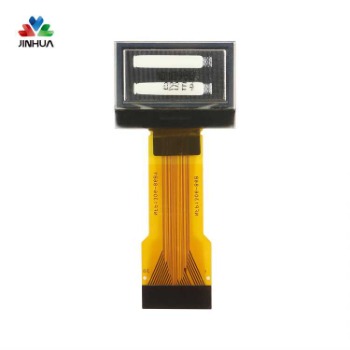Der Bildschirm ist ein wichtiger Teil des Mobiltelefons. Es ist wie ein menschliches Gesicht, das dem Benutzer durch die Feinheit und Auflösung der Farben visuelle Bilder präsentiert. Derzeit sind die gängigsten Materialien für Bildschirme in Mobiltelefonen herkömmliche LCD-Bildschirme mit ausgereifter Technologie und OLED-Bildschirme, die die neueste Technologie verwenden und in der Mobiltelefonindustrie beliebt sind. Was ist also der Unterschied zwischen diesen beiden Bildschirmen?
Prinzip
Das Lichtemissionsprinzip von LCDs beruht hauptsächlich auf der Hintergrundbeleuchtungsschicht. Dieser Teil besteht normalerweise aus vielen LED-Hintergrundbeleuchtungen. Es hat nur eine Funktion, nämlich die Anzeige von weißem Licht, aber weißes Licht kann kein Bild erzeugen, daher wird dieser weißen Hintergrundbeleuchtungsschicht eine farbige Schicht hinzugefügt. Nachdem die weiße Hintergrundbeleuchtung den Farbfilm durchdrungen hat, kann die Farbe angezeigt werden, aber das Verhältnis von Rot, Grün und Blau muss angepasst werden. Das Licht kann die Farben Rot, Grün und Blau nicht direkt durchdringen, sondern ändert seine Farbe durch die Flüssigkristallschicht. Die Spannung zwischen den beiden Polen steuert die Anordnung der Flüssigkristallmoleküle, sodass bei großen Öffnungs- und Schließvorgängen mehr Licht emittiert wird und bei kleinen Öffnungs- und Schließvorgängen weniger Licht emittiert wird. Dadurch wird die Menge des weißen Lichts gesteuert, sodass Rot, Grün und Blau angepasst werden können. Passend.
OLED benötigt keine Hintergrundbeleuchtungsschicht wie ein LCD-Bildschirm und auch keine Flüssigkristallschicht zur Steuerung der Lichtmenge. OLED kann selbst Licht ausstrahlen, daher ist OLED wie ein Bildschirm mit unzähligen kleinen bunten Glühbirnen.
Dicke
Der LCD-Bildschirm besteht aus einer Hintergrundbeleuchtungsschicht und einem Flüssigkristall, wodurch er viel dicker als OLED ist. OLED-Bildschirme können weniger als 1 mm dick und leichter sein. In dieser Hinsicht ist OLED leichter als LCD und das Telefon fühlt sich strukturierter an.
Biegsamkeit
Aufgrund der Flüssigkristallschicht und der Hintergrundbeleuchtungsschicht ist es unmöglich, dass sich der LCD-Bildschirm wesentlich verbiegt. Der OLED-Bildschirm selbst ist eine feste Struktur ohne flüssige Substanzen, sodass er auf Substraten aus verschiedenen Materialien hergestellt und zu einem flexiblen Display verarbeitet werden kann, das gebogen werden kann. OLED lässt sich fast wie Origami falten und der gebogene Bildschirm von Samsung wird von der OLED-Technologie unterstützt. Es ist zu beachten, dass es sich hier um eine große Biegung handelt. Diese gebogenen Bildschirme auf Desktops sind immer noch LCDs. Sie können feststellen, dass der Biegegrad nicht groß ist. OLED kann wie Papier in der Mitte gefaltet werden. Im Vergleich zu LCD-Bildschirmen OLED-Bildschirms haben ein breiteres Anwendungsspektrum.
Kontrast
Unter Kontrast versteht man das Verhältnis von Weiß zu Schwarz. Je höher der Kontrast, desto dunkler ist die Farbe des Bildes. LCD verfügt über eine Hintergrundbeleuchtungsschicht und Schwarz ist kein reines Schwarz, daher ist es schwierig, den Kontrast zu erhöhen. OLED strahlt kein schwarzes Licht aus, daher können einige Pixel im schwarzen Bereich direkt ausgeschaltet werden, sodass es im Grunde genommen unendlich nahe an Schwarz liegt.
Stromverbrauch
Da OLED-Pixel unabhängig voneinander arbeiten, leuchten sie auf, wenn sie hell sein sollen, dunkel, wenn sie dunkel sein sollen, und schalten sich aus, wenn sie dunkel sein sollen. Unabhängig davon, welche Farbe das LCD anzeigt, ist die Hintergrundbeleuchtung vollständig eingeschaltet, sodass das LCD dazu bestimmt ist, Strom zu verbrauchen.
Bildschirmhelligkeit
Seit dem LCD-Bildschirm Nimmt das Prinzip der Reflexion an, die Helligkeit des Bildschirms kann leicht erhöht werden, indem die Helligkeit des weißen Lichts des Hintergrundbeleuchtungspanels erhöht wird. Da OLED-Bildschirme jedoch ihr eigenes Licht ausstrahlen, verwenden OLEDs im Allgemeinen die PWM-Dimmung, die den visuellen Rest des menschlichen Auges nutzt, um periodisch Hell und Dunkel abzuwechseln, um die Helligkeit anzupassen. Daher kann es leicht zu Störungen durch externes Licht kommen.






 English
English Deutsch
Deutsch русский
русский español
español العربية
العربية



 IPv6 NETZWERK UNTERSTÜTZT
IPv6 NETZWERK UNTERSTÜTZT
